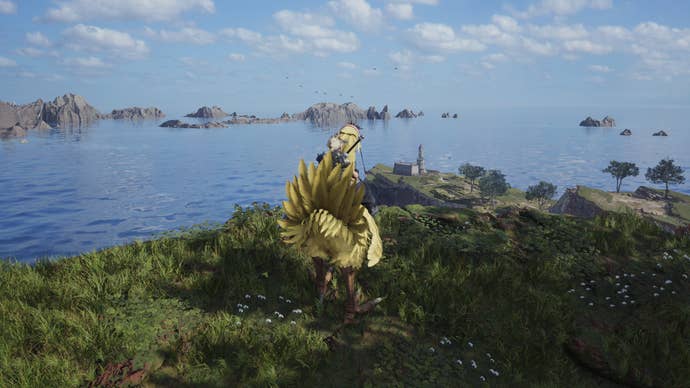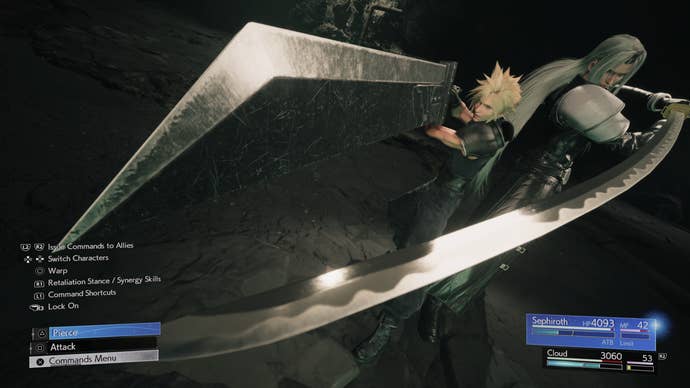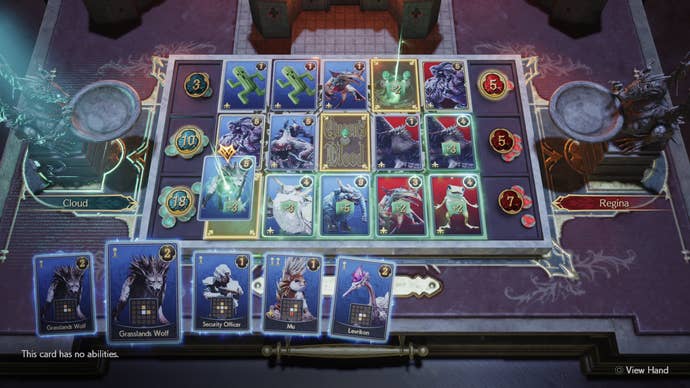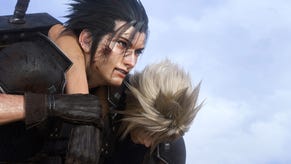7 things to look forward to in Final Fantasy VII Rebirth
Can newcomers enjoy Final Fantasy VII Rebirth? Do you need to play Remake first? How are the two games different? Here's what you need to know.
This article is sponsored by Square Enix.
It’s time for Final Fantasy VII’s homecoming. On February 29, Final Fantasy VII Rebirth launches exclusively on PlayStation 5 and continues the three-part remake of the original.
Like the name might suggest, Square Enix reimagines the story of Cloud Strife and his friends as they journey across the world to stop Sephiroth from ending it. At the end of FFVII Remake, Cloud and his allies leave behind the industrial city of Midgar to pursue him.
Rebirth picks up from where Remake ended, introducing players to a wider, more diverse world outside Midgar’s borders. As a result, Rebirth contains a lot more exploration which makes for a more open-ended adventure than its predecessor. It’s filled with enough quests and minigames that your full playthrough could easily last more than 100 hours, so it’s easy to feel overwhelmed by the sheer volume of it all. That’s what this list is for: to help you break down the most exciting elements of the game.
Here are seven of the most exciting additions to look forward to in Final Fantasy VII Rebirth.
Sector 1: A legendary story for a new era
.jpg?width=690&quality=70&format=jpg&auto=webp)
One of FFVII’s strengths is its story, which carries over to the new games. Remake made it clear to returning fans that it wasn’t following the script beat by beat. Rebirth follows the same trend, remaking familiar locales and hinting at new twists that set it apart from its inspiration. Instead of just repeating history, Rebirth builds on the source material with sprawling regions in an open-world makeover, side quests that deepen the world’s lore, and charming interactions between the main cast.
Remake covers Cloud’s return to Midgar and gives context to his relationships with Tifa, Barrett, and Aerith. Red XIII arrives at the tail end of the game. Then, it sends the gang off when they leave the city to pursue Sephiroth – eventually meeting other allies like Yuffie and Cait Sith.
Remake expanded the first five or so hours of the original game into a fully-featured 30 to 50-hour RPG, and Rebirth’s expected playtime can easily match (and even exceed!) that number as it takes the gang all the way to the Forgotten Capital.
That said, you can start with Rebirth without playing the original FFVII or Remake. You’ll just be missing some context that you need to understand specific references.
Sector 2: A world of wonders
.jpg?width=690&quality=70&format=jpg&auto=webp)
Rebirth opens the door to the FFVII world in a way that Remake wasn’t able to. Remake breathes life into Midgar and its many sectors, which by no means is a small feat. However, Rebirth expands the new FFVII world into an entire map that players can look forward to visiting as the crew strikes out into the world of Gaia.
Each section that serves as a short pitstop in the original now has exponentially more content stuffed into each part. These locations sometimes even hold secrets from characters’ pasts, like Cloud and Tifa’s childhood memories in Nibel, and Red XIII’s origins in Cosmo Canyon.
The Grasslands, a verdant landscape with open plains and swamps, function as a starting point for Rebirth with its lush, refreshing contrast to Midgar’s polluted streets and slums. Others like the jungles of Gongaga, the seaside resort and deserts of Corel, and the rocky mountains of Nibel further diversify FFVII’s world. Each of them has evolved from their smaller, low-res forms from the past into detailed settings with stories to discover past a surface level. Like Midgar expanded from five hours into 30, these easily add hours of playtime to the original content.
So play through some side quests, try out some mini-games, and converse with your companions. There’s no rush: enjoy the thrill of capturing ostrich-like Chocobos or chilling on the beach in Costa del Sol.
Sector 3: Getting around in style

Rebirth incorporates many mounts and vehicles that you can use to traverse the World.
Chocobos – oversized, two-legged birds mascots of the Final Fantasy series – return with various colors and abilities, even if you can’t breed them like in the original game. Their colors denote their abilities to scale craggy cliffs, soar through skies, and jet over water. The Buggy, a monstrous ATV-like vehicle with eight wheels, also returns with a new design and purpose in Rebirth. Wheelies, which resemble real-life hoverboards, debut in Costa del Sol and offer prizes for how far you ride it. Expect to experience a variety of rides before the game is over.
Sector 4: Combat redefined

The original FFVII operated on the 'Active Time Battle' system, but Rebirth ditches this in favor of one that fuses real-time action with strategic menu-based commands. It pays homage to the original but modernizes it all to make combat faster and more action-packed, even before the new Synergy abilities.
Each character has their own unique playstyle, too. Tifa’s martial arts deal heavy damage to single targets, Barret attacks from afar with his cannon, and Red XIII blocks hits to fill up his Vengeance meter and then unleashes it to do more damage. Rebirth encourages you to test different teams of characters to fully appreciate and take advantage of their diverse strengths. Folios (AKA skill trees) further embody Rebirth’s experimental spirit with the ability to reset and reselect skills to find different playstyles.
Sector 5: Teamwork makes the dream work
.png?width=690&quality=70&format=jpg&auto=webp)
Speaking of bonds, you aren’t the only one that gets to take advantage of them. Rebirth builds on the combat system from Remake with new mechanics that deepen its complexity.
Synergy abilities combine your characters’ powers to unleash powerful attacks. It doesn’t change the combat from Remake, but rather fills in the gaps so that you feel more rewarded for striking weaknesses and making the most out of characters’ strengths. Each possible pair of playable characters have a unique Synergy ability and animation, like flashy Ultimate abilities seen in similar games.
For example, one of Aerith and Barrett’s Synergy abilities involves the former donning a pair of sunglasses as they strike enemies from afar with ammo and magic. Meanwhile, Cloud rides Cait Sith as the two charge toward a foe, Cloud slashing at them with his Buster Sword.
You’ll have to unlock each Synergy ability to see them in action, further building on the relationships between the cast with comedic and cool animations.
Sector 6: Bonds are everything
.png?width=690&quality=70&format=jpg&auto=webp)
Your bonds aren’t just for punching baddies, either. Sure, improving your relationships with party members or raising the party level as a whole affects your synergy in battle. However, Rebirth adds a social sim-like aspect that used to be hidden in the original version and expands on it.
Rebirth puts weight behind your interactions with allies, including how you respond to them in dialogue, use them in combat, and complete quests with them. These “bonds” affect certain scenes like the date at the Gold Saucer theme park, an iconic event from the original game.
Sector 7: Minigame madness

Minigames are one of the main attractions in Rebirth. It isn’t just the ones from Remake carrying over (like the Fort Condor strategy game), but also those remade from the first FFVII and even completely new ones making their debut in Rebirth. You can engage in dozens of these minigames from action-packed ones Chocobo Racing to more relaxing ones like playing classic FFVII music on the piano.
Every mini-game ties into the world or its characters in some way. Square Enix even reimagined some like Junon Parade, a marching game that challenged players to execute the Shinra March with timed button presses, as a rhythm action game in Rebirth to make it more challenging and exciting. Others like Wild Run, featuring Red XIII in a Rocket League-like sim, give us more screen time with characters, even if it's in a mini-game.
Queen’s Blood, a new card game, especially stands out as a challenge you can initiate with players across Rebirth’s world. It features a 3x5 grid where players strategically rack up points through the value of their cards, which have special abilities like destroying opponents’ cards and other pesky moves that could trump your opponent’s strategy. Queen’s Blood even has its own storyline that follows players throughout the game.
That’s not even all that Final Fantasy VII Rebirth has to offer. These seven things should help you get a feel for what to expect and why Rebirth is such an important installment, but we could only fit in so much about the breadth of content and care put behind each addition.
Newcomers are still capable of enjoying Rebirth, even if they haven’t played the original, Remake, or any FF game at all. If you want to know more, you can check out our Final Fantasy VII Rebirth review – don't worry, it's spoiler free.







